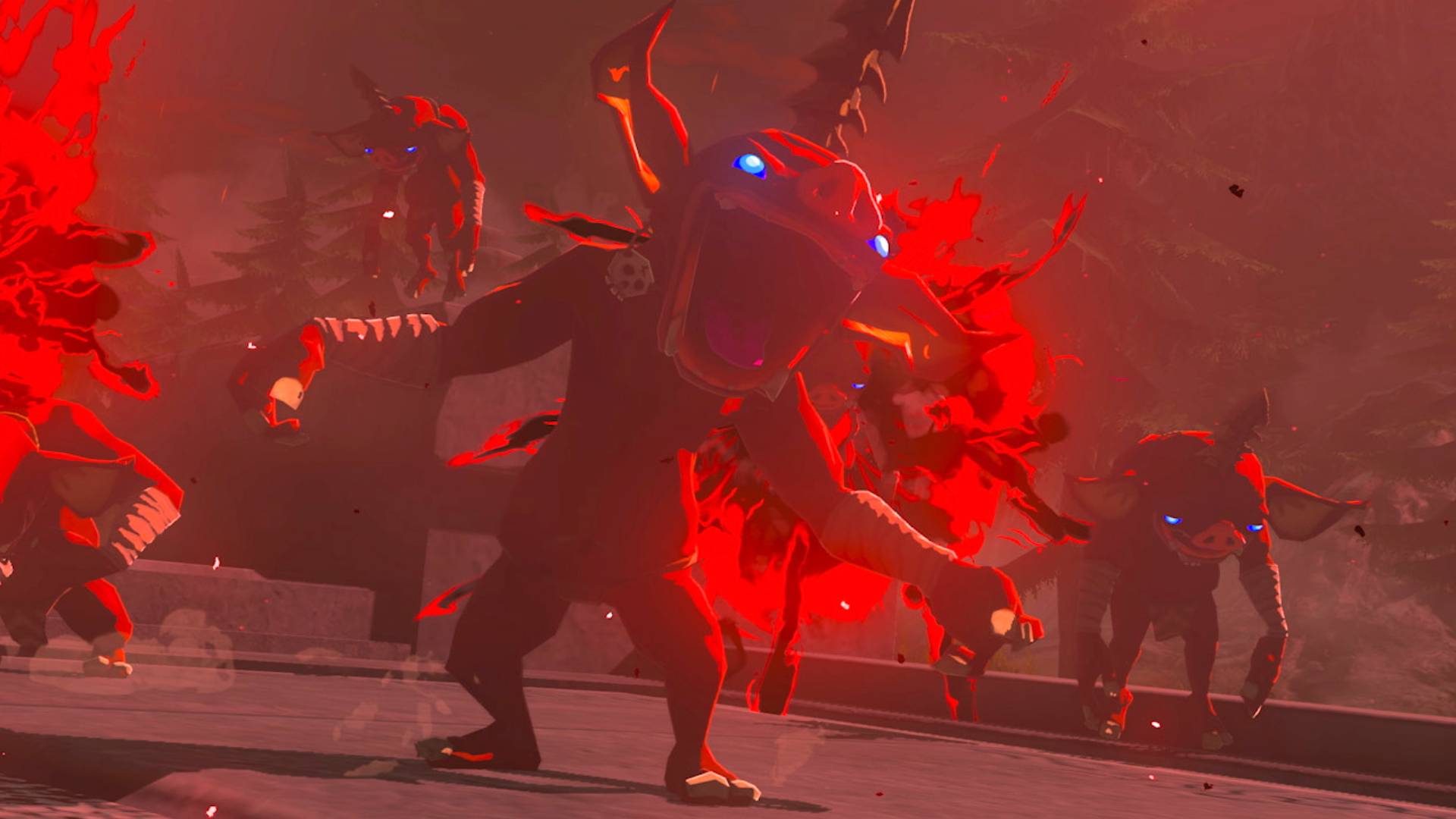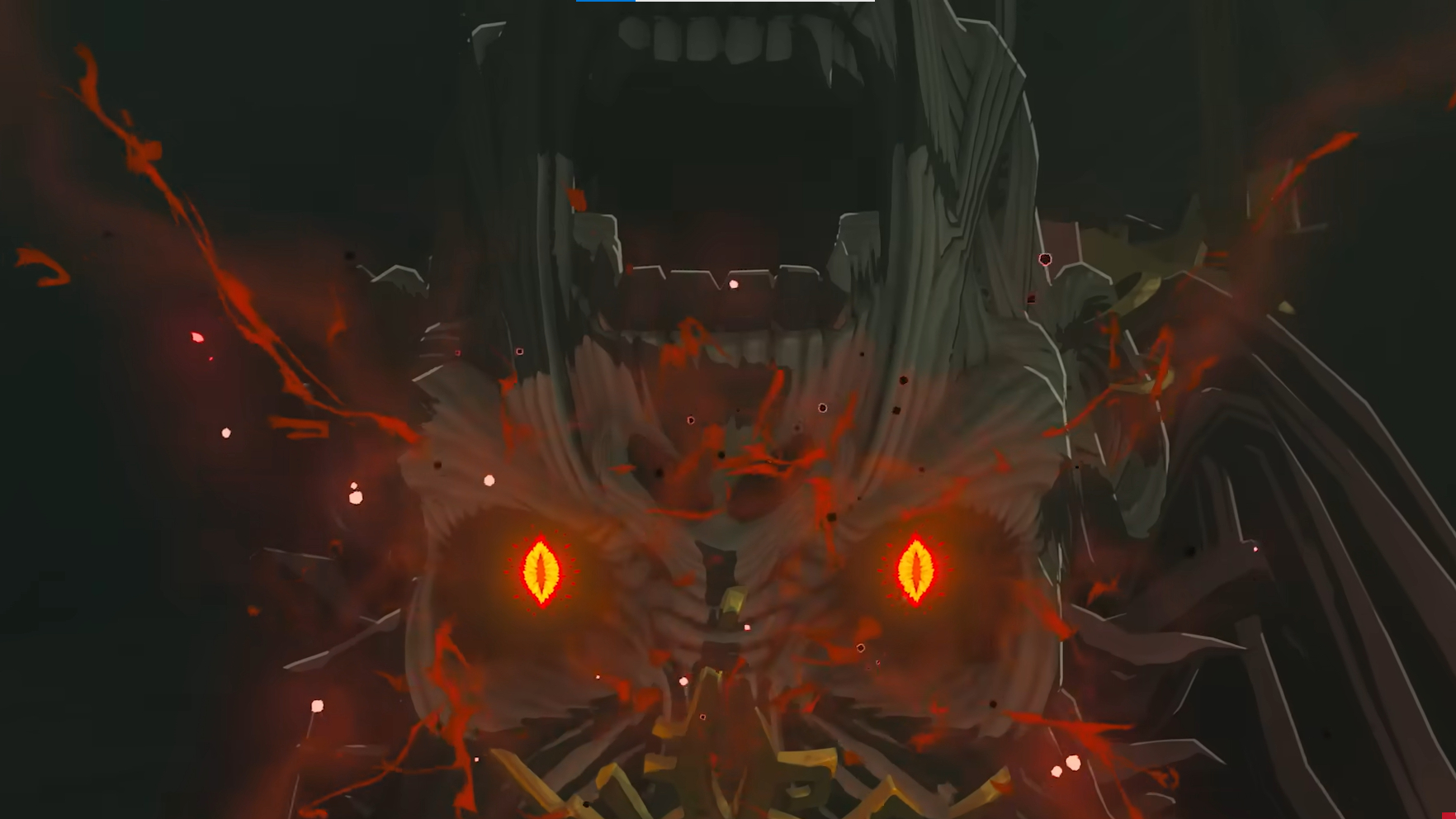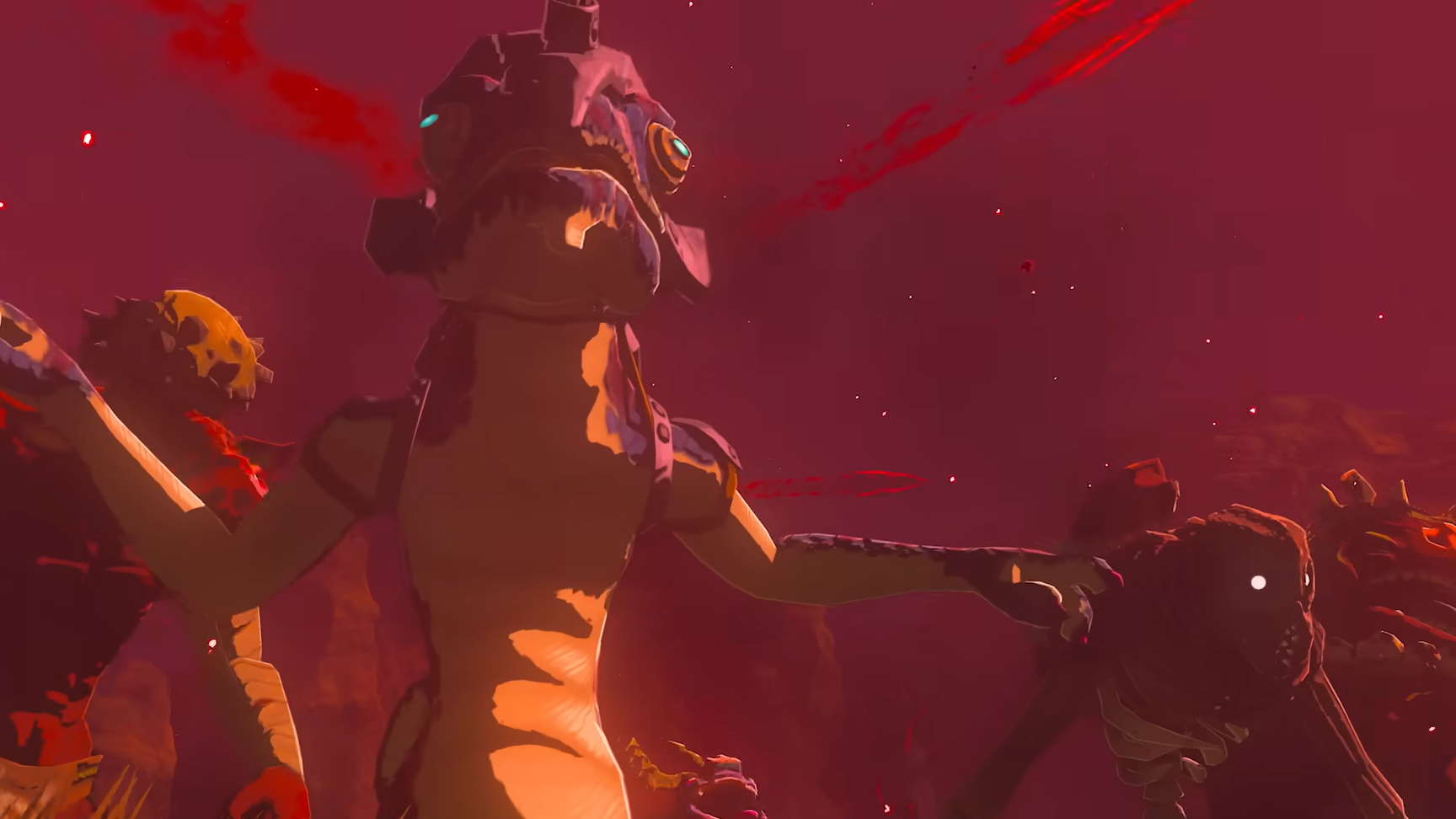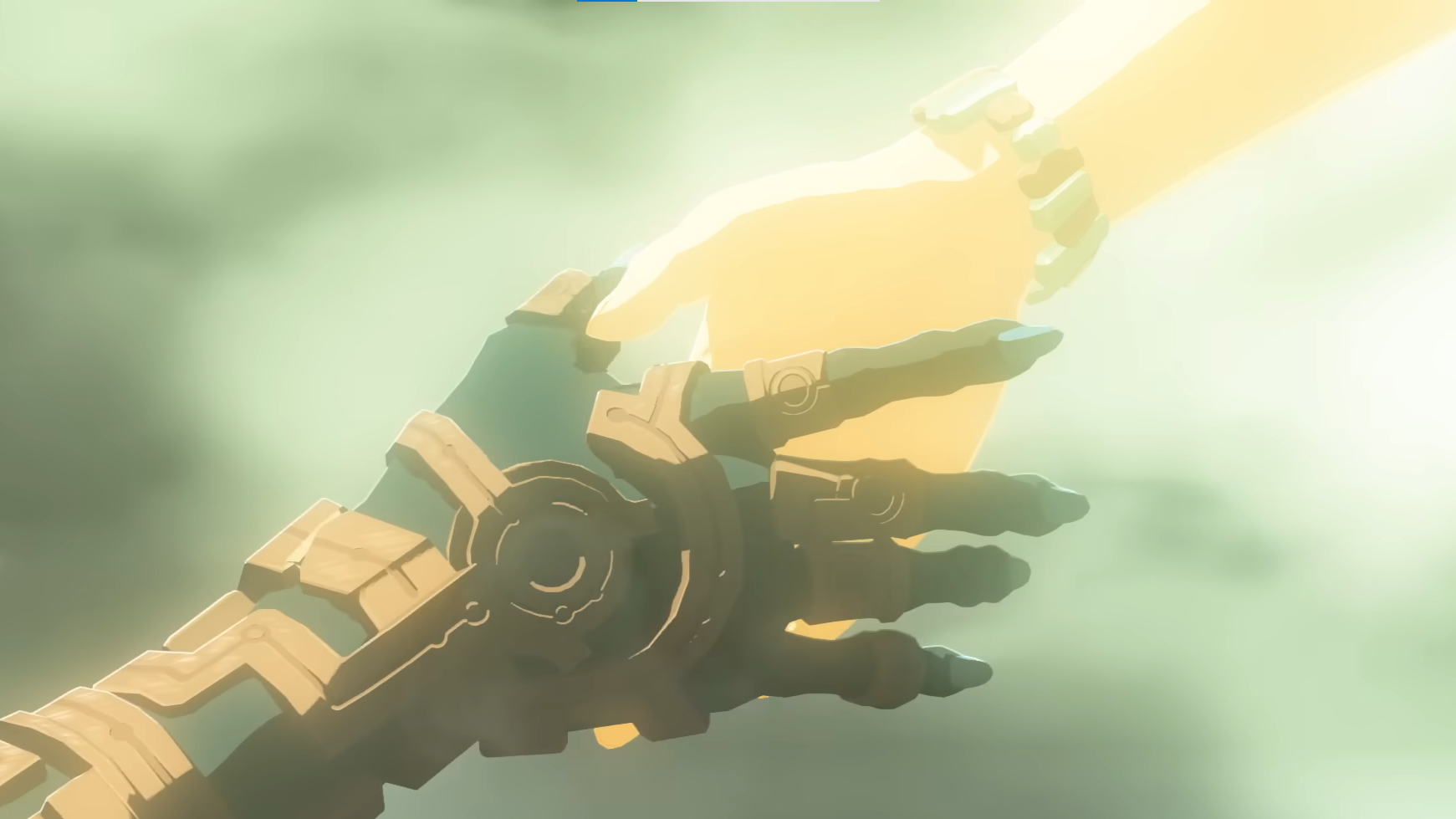The new Zelda trailer has convinced me we're seeing the end of the series' timeline
Where do we go from here?

With bated breath, I and content-starved Zelda fans worldwide watched February’s Nintendo Direct as we finally got another chance to interrogate a trailer for The Legend of Zelda: Tears of the Kingdom.
There’s plenty to unpack here. Foremostly, we finally have a voice for Ganondorf - and I, a Critical Role fan, am totally convinced that it’s Matthew Mercer. There are also some exciting new enemies in addition to some familiar faces, an array of slightly weird-looking vehicles, and lots of intriguing hints toward the game’s content and lore before it releases on the Nintendo Switch on May 12, 2023.
We still don’t have confirmation on when exactly Tears of the Kingdom takes place on the Legend of Zelda timeline, though the trailer strongly suggests it picks up almost directly after the events of The Legend of Zelda: Breath of the Wild. Similarly, we don’t know how the mechanics of traversing the three distinct layers of Hyrule – the floating islands, mainland, and the underground caverns – will work or quite why a dragon that looks an awful lot like the original Legend of Zelda’s Gleeok was lingering around the Bridge of Hylia.
In everything we’ve seen so far from Tears of the Kingdom, there’s an apocalyptic feel to the game’s tone that hearkens back strongly to darker themes within the series. All of this has left me with one burning question: are we seeing a definitive end to this Zelda timeline?
Mummy? Sorry. Mummy?
Over the past 30 years, Nintendo has established three distinct timelines within The Legend of Zelda series, with events of games in one timeline not impacting the stories of the games in the others. Chronologically, Breath of the Wild takes place after all the other Zelda games and Nintendo used it to unify the different timelines.
Breath of the wild was brimful with hat-tips towards previous games, from geographical location names to the ruins of the Temple of Time to musical motifs in certain areas. The game didn’t explicitly follow a single timeline, instead deftly suggesting the events of all three had taken place.
Where Breath of the Wild was a story of recovery and rebirth following big villain Calamity Ganon’s wrath, contrastingly, the most striking theme for me in the latest Tears of the Kingdom trailer was death and resurrection, paralleling this rebirth narrative with a more sinister twist. After all, in the very first teaser for the game, we see heroes Link and Zelda awake a mummified Ganon.
Get daily insight, inspiration and deals in your inbox
Sign up for breaking news, reviews, opinion, top tech deals, and more.

Front and centre in the Tears of the Kingdom trailer, too, is the blood moon. In Breath of the Wild, this eerie red night would signify the return of all the enemies you had so far defeated on your adventures. The resurrection event was described as an “unlucky” byproduct of Ganon’s power seeping out of Princess Zelda’s control. In this new game, however, it looks like the mechanic is much more significant. A much darker, more chaotic resurrection process where globs of malice appear to rain down from the sky and erupt into new, seemingly-mutated enemies. It brings Legend of Zelda: Majora’s Mask to mind, with its menacing moon, slowly descending upon Clock Town.
Continuing that theme of death and rebirth, we have the return of my personal nightmare fuel, the ReDead. These lurking enemies sit in the dark, ready to immobilize you with a Medusa-like stare before stalking over to you and attacking while you stand frozen. The ReDead have been notably absent from the series since TriForce Heroes back in 2015, and even then, that was their first appearance in a Zelda game in over 10 years, so bringing back these bone-chillingly creepy enemies is a noteworthy move.

We had the most brief of glimpses at Ganondorf in the E3 2019 trailer for Tears of the Kingdom, but with February’s Nintendo Direct, we can see his mummy-like appearance in more horrific detail, calling on his dead armies to “Rise. Rise, my servants.”
Could this spell Demise?
Whatever is happening in Hyrule is big. Early shots from the trailer seem to show Hyrule’s mechanical guardians exploding in a ball of Ganon’s deep red Malice, and Zelda questions in a voice-over if our hero will be strong enough to defeat his enemies. This rings louder still, as it appears Link’s iconic weapon, the Master Sword, is broken after seemingly becoming infected with that same scarlet power. All the while, our hero is sporting a distinctly corrupt-looking arm; perhaps even he isn’t impervious to the chaotic rot Ganondorf has sewn.
It also appears that Princess Zelda’s role as the reincarnated Goddess Hylia will play a key role in the narrative. First introduced in 2011’s Skyward Sword, the canonic beginning of the timeline, the Goddess Hylia is relatively new addition to the series. Having her feature heavily in this game could mean we’re seeing the final confrontation between her and Demise, the original antagonist behind all evil in Hyrule, and perhaps even an end to Link and Zelda’s repeated reincarnation.

From the mysterious, glowing figure who takes Link’s hand to Zelda’s pleas for someone to “lend their power” to Link, we could also finally be about to see the Goddess take physical form - but what would this mean for Princess Zelda? Fans are already speculating that the true meaning of the game’s title refers to the death of the Princess, and her notable absence in the trailer barring shots of her falling, does little to dispel that theory.
Lastly, while this trailer wasn’t the first time we’ve seen the game’s logo, it certainly cemented my feeling that Tears of the Kingdom will mark the breaking of a cycle. Historically, Zelda logos have featured significant design elements that depict key themes or items in the games, and besides the decrepit Master Sword, there’s a pretty significant reference to an iconic symbol of life, death, and rebirth in the circular, cyan ring behind the game title: ouroboros.
The blood moon rises
Thematically, Tears of the Kingdom is giving off some pretty gnarly end-time energy, but not in a way I can see Nintendo retconning in years to come. I’m finding it pretty hard not to believe we’re being forewarned - The Legend of Zelda: Tears of the Kingdom heralds the end of the cycle, and thus the end of the timeline.
Of course, this doesn’t mean it’s the last Zelda game - there’s an entirely undetermined space between every other Zelda game and Breath of the Wild, so Nintendo has plenty of gaps to plug. This could massively change the relationship the fans have with the games, though, so it would be a risky move - luckily, we only have to wait a few more months to see what comes next for the Hero of Time.

Josephine Watson (@JosieWatson) is TechRadar's Managing Editor - Lifestyle. Josephine is an award-winning journalist (PPA 30 under 30 2024), having previously written on a variety of topics, from pop culture to gaming and even the energy industry, joining TechRadar to support general site management. She is a smart home nerd, champion of TechRadar's sustainability efforts as well and an advocate for internet safety and education. She has used her position to fight for progressive approaches towards diversity and inclusion, mental health, and neurodiversity in corporate settings. Generally, you'll find her fiddling with her smart home setup, watching Disney movies, playing on her Switch, or rewatching the extended edition of Lord of the Rings... again.